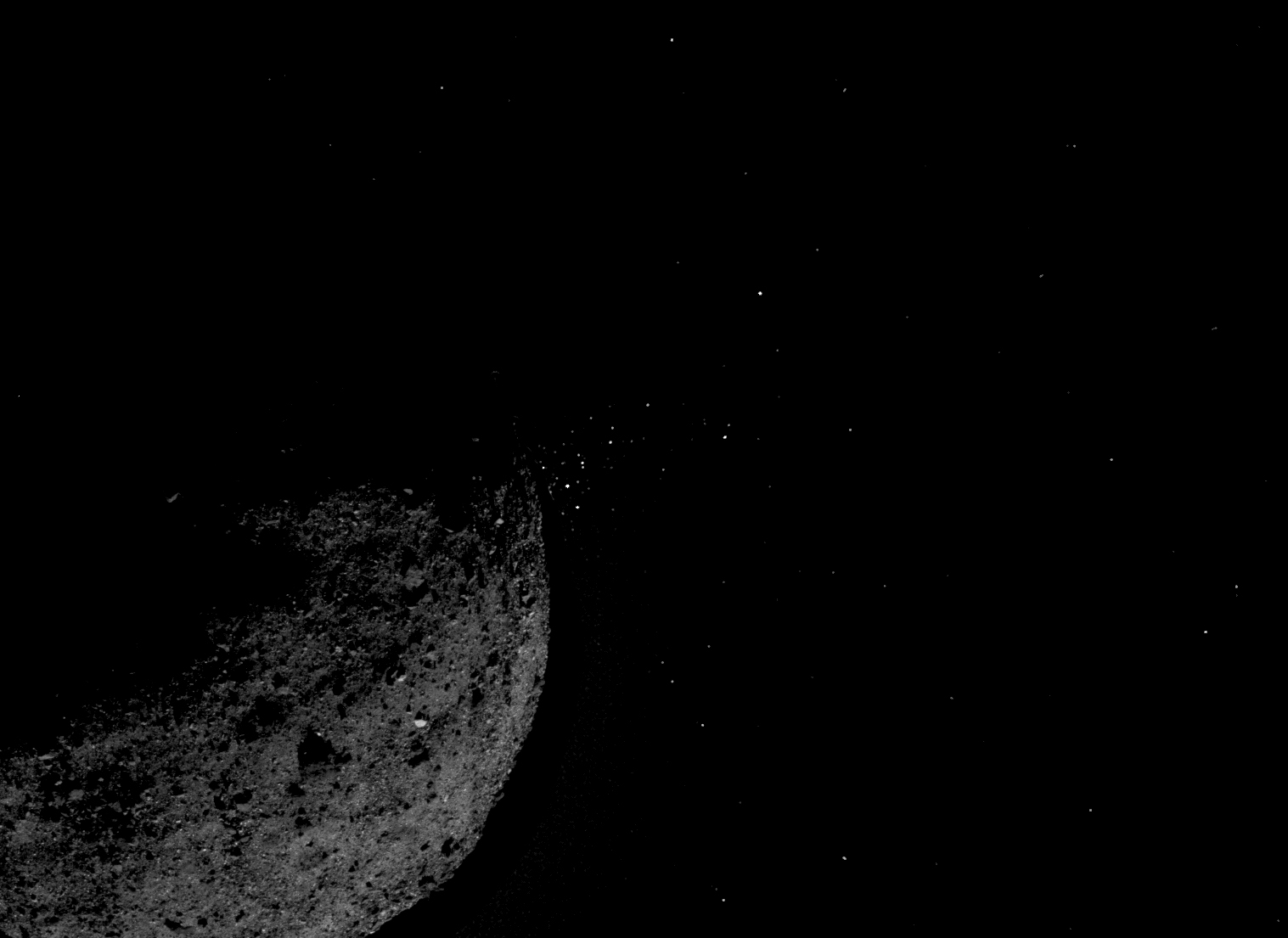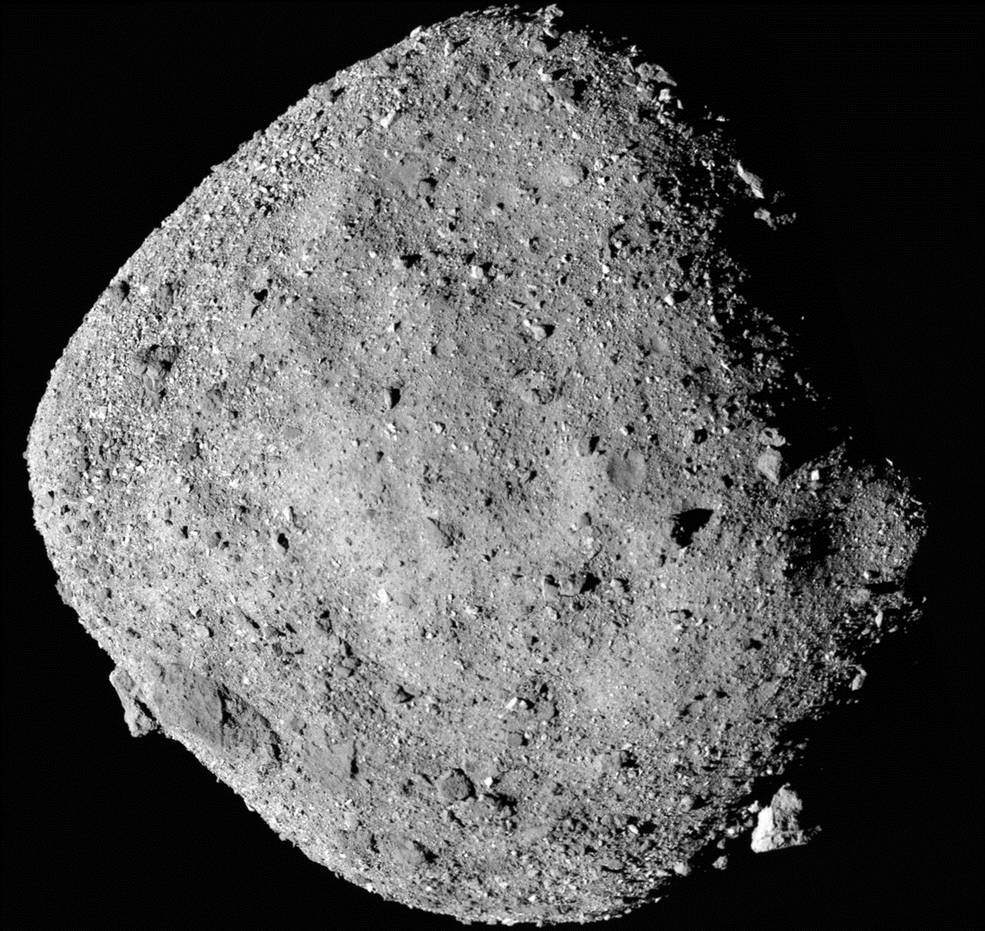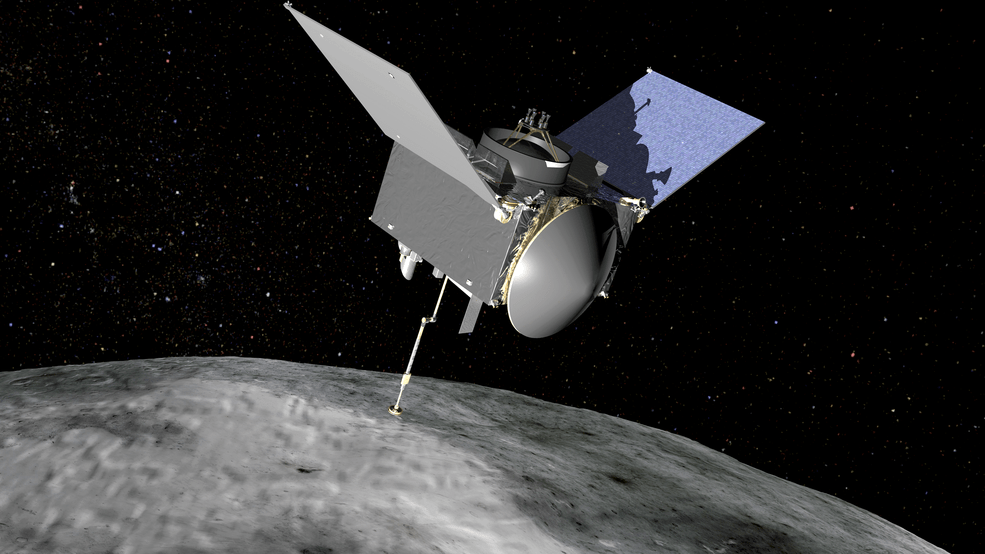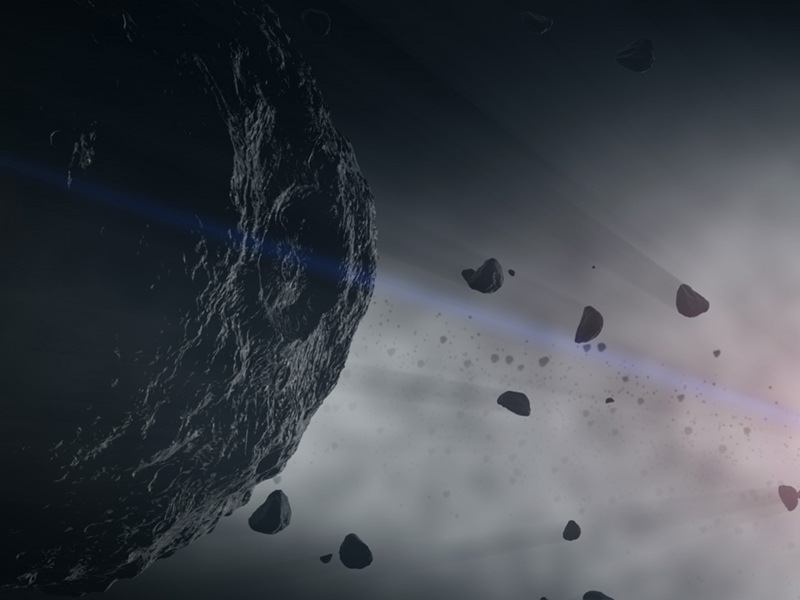On Dec. 31st, NASA's Origins, Spectral Interpretation, Resource Identification, Security-Regolith Explorer (OSIRIS-REx) rendezvoused with the asteroid 101955 Bennu. As part of an asteroid sample-return mission, NASA hopes that material from this near-Earth Asteroid (NEA) will reveal things about the history of the Solar System, the formation of its planets, and the origins of life on Earth.
Since the spacecraft established orbit around the asteroid, it has witnessed some interesting phenomena. This includes the first-ever close-up observations of particle plumes erupting from an asteroid's surface. Since that time, the mission team has kept an eye out for these eruptions, which has allowed them to witness a total of 11 "ejection events" since the spacecraft first arrived.
Like all NEAs, Bennu is composed of material left over from the formation of the Solar System. The study of this asteroid is therefore expected to reveal a great deal about this process, as well as offer insight into how water and organic molecules were distributed throughout the Solar System billions of years ago.
Ever since the spacecraft rendezvoused with the asteroid three months ago, the science team has been treated to a number of surprises. For starters, the team found that the asteroid's surface was much more rugged than originally thought, which has forced them to adjust their plan for landing on the asteroid and collecting samples.
In addition, the first ejection event (which was observed on Jan. 6th) was also unexpected, not to mention the subsequent ten eruptions that took place. As Dante Lauretta, the principle investigator of the OSIRIS-REx mission at the University of Arizona, said in a recent mission press release:
The first ejection event was discovered after the OSIRIS-REx team noticed particles in one of the images taken by the spacecraft's NavCam 1 imager while the spacecraft was orbiting Bennu at a distance of about 1.6 km (1 mi). After assessing the event, the team concluded that the particles did not pose a risk to the spacecraft and chose to continue monitoring the ejection events.
Although much of the matter ejected by the plume were thrown clear of Bennu, the team noticed that some of the particles fell into orbit as satellites before returning to the asteroid's surface. This could mean some of the material (which is ejected from the interior) could be retrieved once the spacecraft collects samples from the surface.
Lori Glaze, the acting director of the Planetary Science Division at NASA Headquarters in Washington, summarized these developments thusly:
Nevertheless, Bennu's biggest surprise continues to be its rugged and boulder-strewn surface. Based on observations obtained from Earth, the team expected to find a relatively smooth surface with few large boulders. This was based on observations of Bennu's its thermal inertia (its ability to conduct and store heat) and from radar measurements of its surface.
However, when the spacecraft arrived, the team found that the surface had a significantly higher-than-expected boulder density. The fact that their initial findings proved to be incorrect led the team to revise the models used to interpret the asteroid data, as they clearly fail when it comes to predicting the nature of small, rocky, asteroid surfaces.
Bennu's rocky surface also means that the team's plan for sample collection - a Touch-and-Go (TAG) procedure - needs to be adjusted. Originally, the plan was to land at a clear site that was about 50 meters (164 feet) in diameter. But because of the boulder-density, the team has not been able to find a clear spot that big and has begun looking for smaller candidate sites instead.
This will demand a great deal more accuracy from the spacecraft during its descent to the surface, which is why the mission team is developing an updated approach (called Bullseye TAG). As Rich Burns - the project manager of OSIRIS-REx at NASA's Goddard Space Flight Center - explained, all of this has put the mission team through its paces:
Other discoveries of note include the fact that Bennu's spin rate appears to be gradually slowing down. This is the result of the Yarkovsky-O'Keefe-Radzievskii-Paddack (YORP) effect, where uneven heating and cooling causes a decrease in rotational speed. As a result, Bennu's rotation period is slowing down at a rate of about one second per century.
Another interesting find was the presence of magnetite on Bennu's surface, which was picked up by the spacecraft's MapCam color imager and Thermal Emission Spectrometer (OTES). The presence of this mineral bolsters earlier findings that indicate that there interactions between rocky material and liquid water on Bennu's parent body.
These and other findings were presented at the 50th Lunar and Planetary Conference, which took place from March 18th to 23rd in Houston, Texas. The findings also appeared as part of a special collection of papers that were published by the scientific journal Nature.
*Further Reading: OSIRIS-REx, Nature*
 Universe Today
Universe Today




